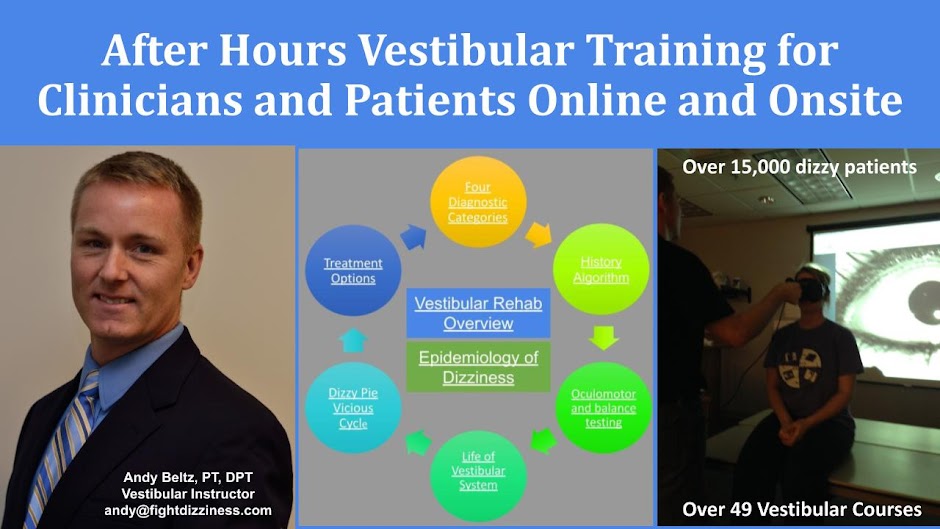The following is an entry I wrote for my discussion board in tDPT school today. The idea of comparing these two worlds thrills me!
Hypofunctions and Hyperfunctions: The Dizzy World’s Contribution to the Invisible World of Pain.
Since I am a dizzy therapist, I can’t help but love comparing this information with my specialty. In Shmid’s article, the authors state, “symptoms and signs in neuropathies can be classified as gain or loss of function. Gain of function, such as paraesthesia, spontaneous pain, hyperalgesia and allodynia, reflects abnormal excitability or reduced inhibition in the nervous system. Loss of function, such as hypoesthesia or anaesthesia, indicates reduced impulse conduction along the nervous system (Woolf, 2004).”1 Woolf et al elaborate by stating, “Peripheral neuropathic pain, that clinical pain syndrome associated with lesions to the peripheral nervous system, is characterized by positive and negative symptoms. Positive symptoms include spontaneous pain, paresthesia and dysthesia, as well as a pain evoked by normally innocuous stimuli (allodynia) and an exaggerated or prolonged pain to noxious stimuli (hyperalgesia/hyperpathia). The negative symptoms essentially reflect loss of sensation due to axon/neuron loss, the positive symptoms reflect abnormal excitability of the nervous system.”2 In summary, Shmid’s terminology of “gain of function” can be compared to Woolf’s “positive symptoms” and “loss of function” can be compared to “negative symptoms.” What is thrilling, is the comparison of this terminology with both subjective and objective findings in the world of dizziness.
Comparison of this terminology is remarkably accurate when related to the vestibular world. More shocking, though, is the objective insight the dizzy world provides for the therapist trying to understand the impact of pain on our nervous system. Indeed, what I have learned from the vestibular world is mind blowing when applied to the pain world and this terminology.
First, it is helpful to understand that peripheral vestibular problems can be organized into two major categories: Hypofunctions and Hyperfunctions. Causes of vestibular hyopfunctions include, and are not limited to: Neuritis, Labyrinthitis, Chronic Meniere’s, Dysequilibrium of Aging, Ischemia, etc and vestibular hyperfunctions: BPPV and Acute Meniere’s. It is interesting that dizzy subjective symptoms are very similar to the pain subjective symptoms in hypo and hyperfunctions. For instance, a few of the sensory problems caused by vestibular hypofunctions include: delay, off, things have to catch up, and off balance. In addition, sensory problems caused by hyperfunctions include: intense spinning, nausea, vomiting, and astounding fear/avoidance. Both categories of vestibular problems compare nicely with the “negative” and “positive” symptoms described by Woolf et al.2
More astounding, though, is the fact that the dizzy objective findings can be seen and correlated with the subjective symptoms. Vestibular hyopfunctions and vestibular hyperfunctions cause obvious objective signs that, when compared to the pain world, might give health care providers treating pain insight into an invisible world. When a client has a hypofunction they will have nystagmus that beats away from the side of the lesion. When a client has a hyperfunction, they will have nystagmus that beats toward the side of the lesion. The nystagmus is often symptomatic and, in the case of BPPV, one can often tell the client what they are feeling without them having to say anything.
These objective findings in the vestibular world help provide credibility and proof that categorizing peripheral nerve injuries as gain of function and loss of function can be compared to hyperfunction and hypofunction in the vestibular world. The objective findings in the dizzy world can provide confirmation of the reality of the science of symptoms relating to pain.
References
- Schmid et al. Reappraising entrapment neuropathies - Mechanism, diagnosis, and management. Man Ther 2013. 449-457.
- Woolf CJ. Dissecting out mechanisms responsible for peripheral neuropathic pain: implications for diagnosis and therapy. Life Sci. 2004;74(21):2605‐2610.

No comments:
Post a Comment